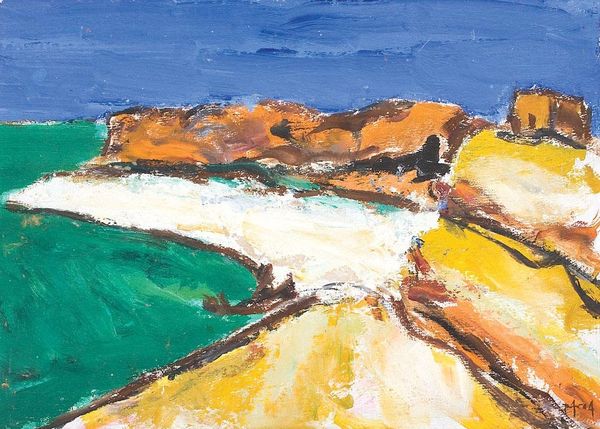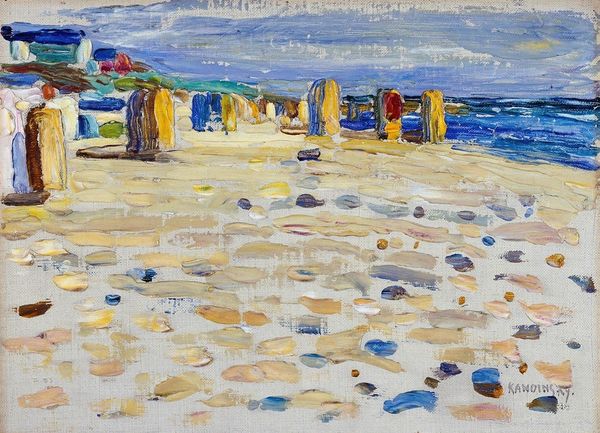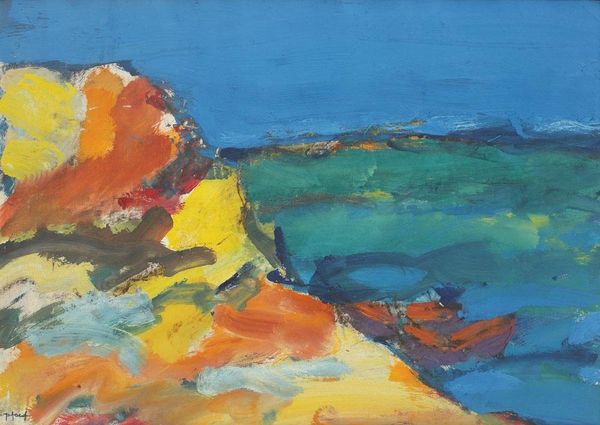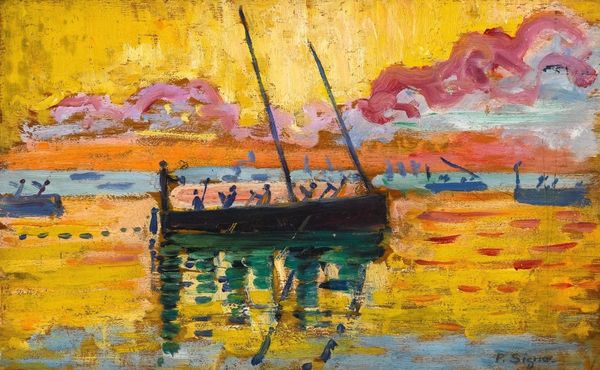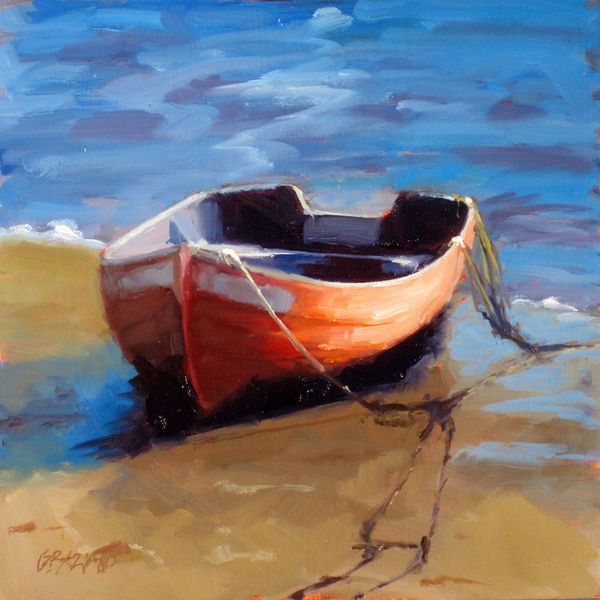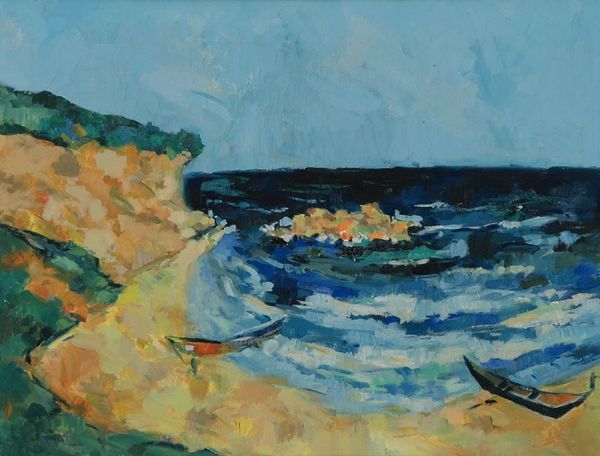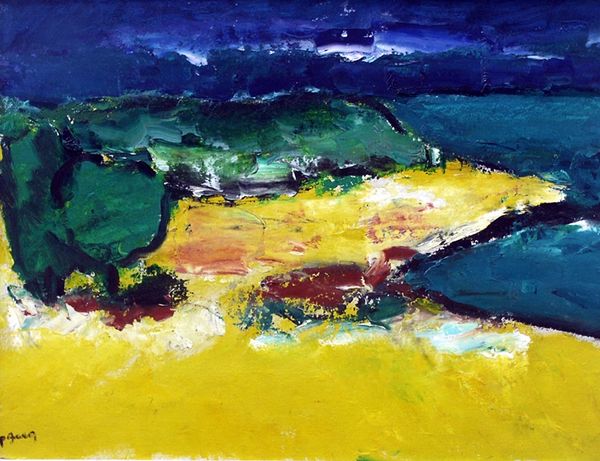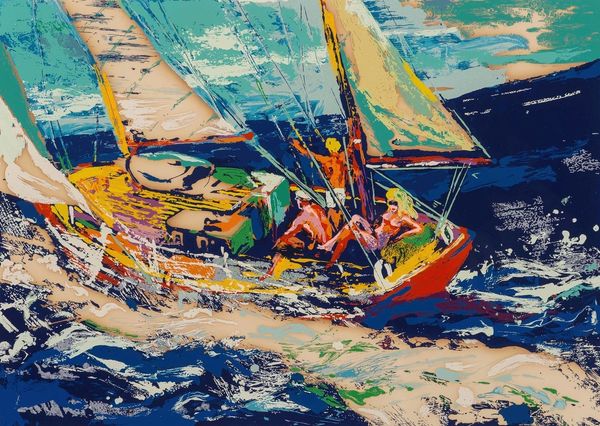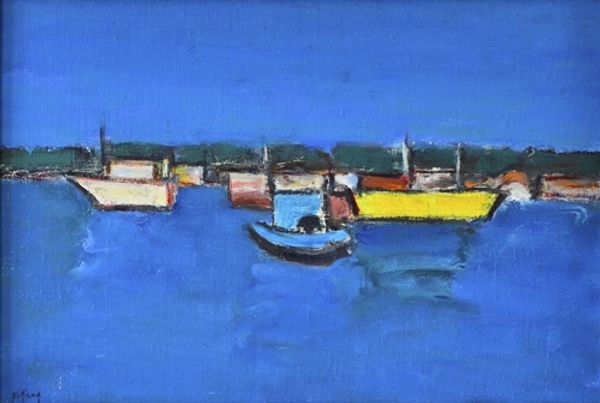
oil-paint, impasto
#
abstract expressionism
#
abstract painting
#
fauvism
#
oil-paint
#
landscape
#
figuration
#
oil painting
#
impasto
#
post-impressionism
#
expressionist
Copyright: Ion Pacea,Fair Use
Curator: Standing before us is "Marina" by Ion Pacea, an oil painting that, while undated, speaks to a Post-Impressionist and Expressionist leaning with hints of Fauvist color. The scene depicts a vivid coastal view, rich in texture and bold color choices. What are your initial thoughts? Editor: My first impression is the sheer intensity of the color palette. That cerulean ocean dominates, and then those vibrant yellow cliffs frame the scene almost aggressively. There’s a stillness, yet the brushstrokes themselves feel so energetic. It's a beautiful contradiction. Curator: Absolutely. Pacea's use of impasto gives the work a tangible quality; you can almost feel the materiality of the paint. And it makes you wonder about his context in the Romanian art world, which throughout the twentieth century had strong ties to the School of Paris. His bold strokes push the tradition, while grounding himself in it. Editor: Thinking about those visible brushstrokes, it brings a question to the foreground about labor and visibility within artistic production. We are reminded that artwork, which at times become fetishized, comes from tangible origins tied to a person or a group of people’s lived existence. Here the material traces of the body remain within the painting’s surfaces through a distinct and expressive style. The painting speaks volumes of an art maker working under the socialist republic established in Romania after the second World War. Curator: Very true, it reflects the cultural context but on another note, how do you feel about the figures—the boats, maybe? To me, it lends a peacefulness as they sit static on the beach. Editor: I agree with you on their calmness. The boats present an anchor point for the composition—allowing the water and sky to act almost like atmosphere, but also perhaps point towards ideas of connection and movement over water in ways we have forgotten as contemporary viewers. Curator: It's interesting how Pacea captured this interplay of tranquility and dynamism. I find myself contemplating the relationship between the personal expression of the artist and the socio-political landscape that formed and constrained his work. Editor: Exactly, and the act of capturing this specific scene is charged because it is at once placid and vibrant, still but always changing through his impasto that marks gesture and action onto canvas, just like how histories mark places and their peoples. The visual push and pull creates dynamism both formally, contextually, and affectively.
Comments
No comments
Be the first to comment and join the conversation on the ultimate creative platform.
